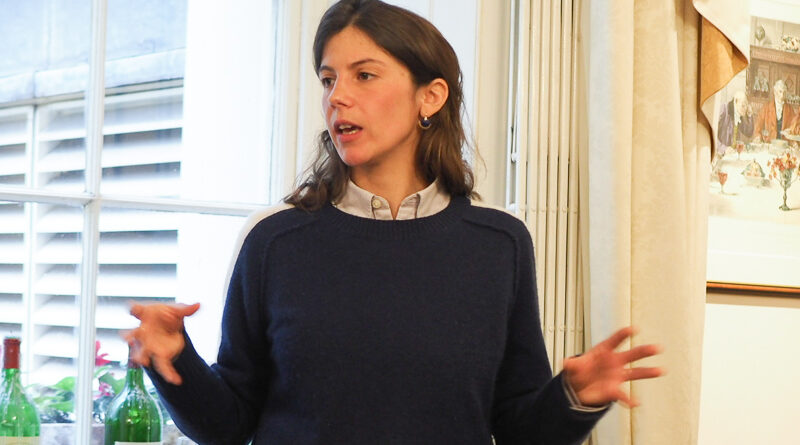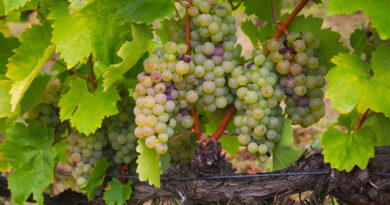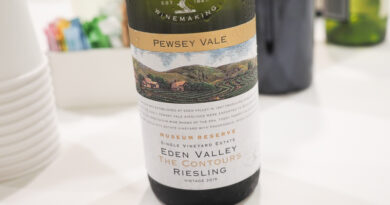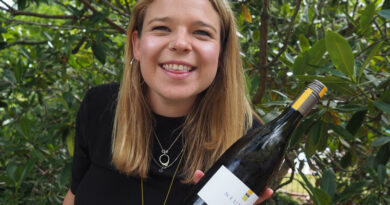The wines of Giulia Negri, Barolo
Guilia Negri is emerging as an exciting star in Barolo, but her journey isn’t a typical one.
She was born in Palermo, where her mother comes from, but grew up in Rome – her father lives there, and was a politician until 1989. Her initial career was as in biotech as a researcher working on cancer therapies, but she travelled to Burgundy and there fell in love with wine. Rather handily, there was a wine estate in Barolo in the family.
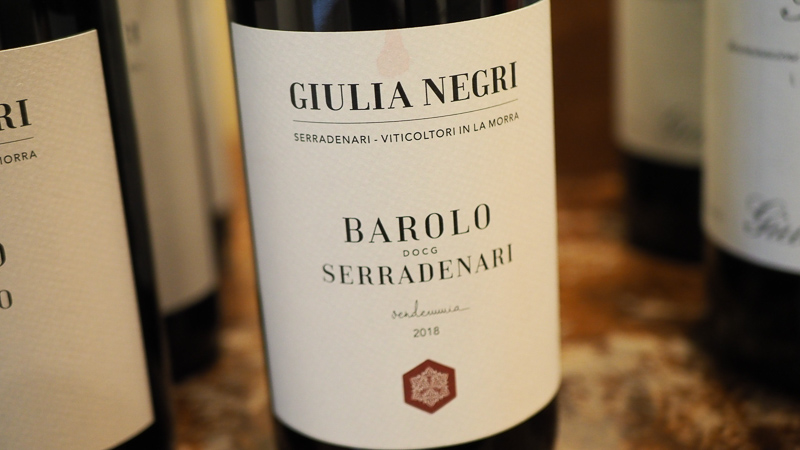
But this was more by accident than design. Her grandfather was a manager at Olivetti, the typewriter company, but he had a passion for truffles. And in the family since 1870 was an estate with 16.5 hectares of forest and 2 hectares of vines. He took the unusual step of removing the vineyards to try to culture truffles in association with trees, but the experiment wasn’t very successful. When he died, Giulia’s father reinstated vines, planting 6.5 hectares with a view to creating a wine estate that he could later sell. It was more driven by entrepreneurship than the love of wine. He brought in a consultant winemaker, and the estate was known by the name of Serredenari, which is also the name of the MGA that constitutes part of the estate.
So Giulia falls in love with wine, and has the happy coincidence of having her family estate to play with. She starts doing vintages elsewhere, to pick up experience. And in 2010 she begins making her own wine, initially by blending what she has in the cellar. She moved to Barolo in 2013 and from 2014 she did the entire process for the first time: tending the vineyards and making the wine. She began following each of the different vineyard plots looking for phenolic ripeness. In 2017, her parents gave her the entire estate, and she merged the existing brands under her own name.
The first wine in the tasting is the Pinot Noir. This was already present in the vineyard, and she says she’d never plant something that isn’t from the area. But she’s had some good advice, with coaching from De Vogue’s François Millet. She’s not a fan of stems, and this Pinot, which is fully destemmed, took five days to start fermenting.
The Barbera is from one of her parcels, plus some bought in grapes. ‘My idea is to make a juicy drinking wine,’ she says. The Barbera is an expression of altitude: in the lower parts, this is a variety that can be tricky these days, and some plots reach 16.5% alcohol without full ripeness.
And with her Langhe, the goal is also drinkability. ‘This is one of my most important wines,’ says Giulia. ‘You are judged more for your village wine than your Grand Cru.’ The idea here is to make a Langhe Nebbiolo, and not a small Barolo. ‘The challenge is to have freshness and juiciness, but also to respect the Nebbiolo characteristics.’ This spends 15-20 days on skins, just with pump overs. She vinifies her Barolo in 6000 litre tronconic wooden vats, and then uses these to age the Langhe Nebbiolo in. She wanted a wine that drinks early, but it still needs two winters’ ageing. The 2020 will be bottled in May 2022. One portion of this wine comes from a first-pass through the Tartufaia vineyard: with its clay soils this produces quite generous yields, with bigger, thinner-skinned grapes. She also buys in some grapes from the same grower she gets the Barbera from. Giulia could make more of this wine, but she’d need a bigger cellar.
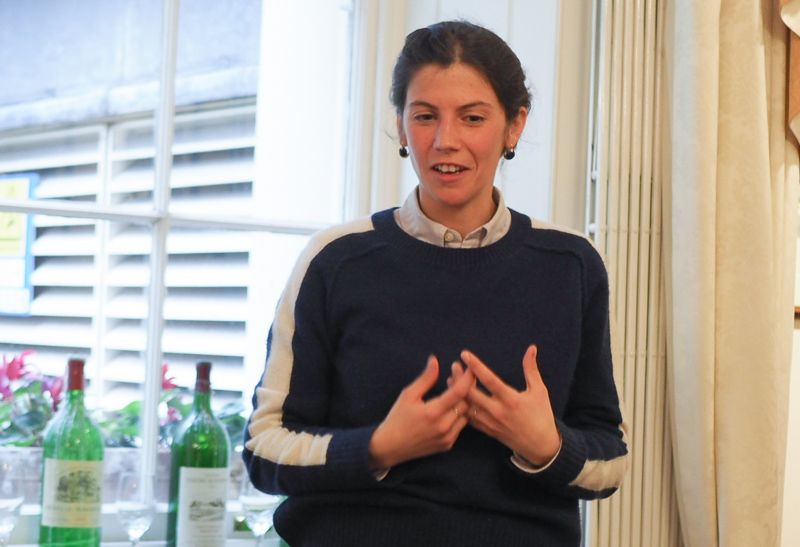
Then to the Barolos. ‘Nebbiolo is an elegant variety,’ she says: ‘It just needs to be picked at the right time.’ A lot of her early work when she took over was monitoring ripeness in the three Barolo parcels, and she began picking them at different times and vinifying them alone. She also did analyses of the soil. These three plots are really different, and you can taste it in the wines. ‘Nebbiolo shows the terroir even more than Pinot Noir,’ says Giulia. ‘Pinot depends on you, but Nebbiolo doesn’t.’ She says she can tell the vineyards apart even at juice stage!
Vinification is the same for all three. 45-50 days on skins, pumping over only, and quite reductive. Aged in 2500 litre barrels.
Tartufaia has clay soils (pH 7.5), and is more productive, yielding Nebbiolo grapes with thinner skins and making wines that are more fruity. The tannins are different.
Serradenari is on acid, sandy soils (pH 5.4). The vines are more vigorous as minerals are more available, and the berries are smaller and thicker-skinned. It’s a high plot with lots of wind and a big diurnal temperature swing.
Marassio is the highest plot at 536 m, and the soils are rich in active limestone (pH 8.5).
Plans for the future? A new gravity flow winery that will eliminate pumping is now under construction. And she’s planning to begin making Barolo from other crus on a negociant basis.
THE WINES
Giulia Negri Laghe Pinot Nero La Tartufaia 2019 Piemonte, Italy
Spicy aromatics: red cherries, a touch of pepper. The palate is quite tannic but also fresh with a stony edge to the fruit, which has purity but also some subtle balsamic characters. It tastes very Italian. Intriguing stuff. 92/100
Giulia Negri Barbera d’Alba 2019 Piemonte, Italy
Juicy, bright and vivid with lovely red fruit. Good acidity under the raspberry and cherry fruit, with a pleasant texture but also a brisk, quite structured finish. 91/100
Giulia Negri Langhe Nebbiolo Pian delle Mole 2019 Piemonte, Italy
Supple and fresh with lovely elegance. Delicate perfumed red cherry fruit with some spicy notes. Supple, fine-grained palate with good structure under the supple fruit. Has a grainy finish. Lovely stuff. 93/100
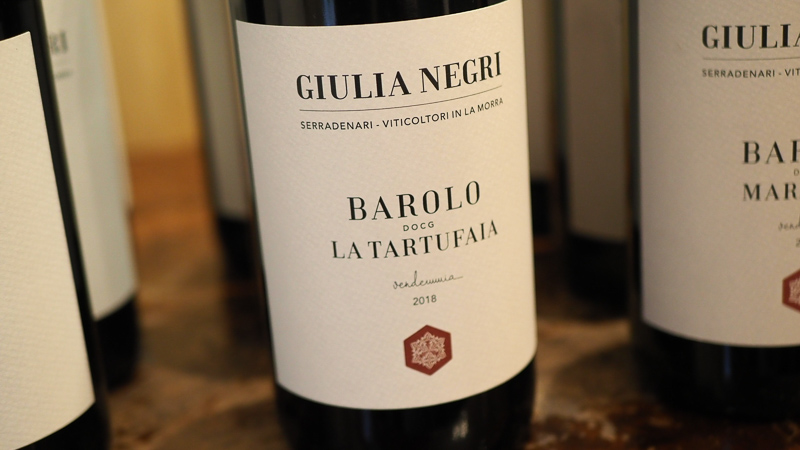
Giulia Negri Barolo La Tartufaia 2018 Piemonte, Italy
Inviting nose of red cherry and redcurrant with some sappy hints. Floral and expressive. The palate is grippy and firm but there’s lovely fruit here too. Juicy, lively and elegant with good structure and finesse. This should age very nicely. 94/100
Giulia Negri Barolo Serradenari MGA 2018 Piemonte, Italy
Compact nose of sweet berries and cherries with some fine spices, and also a bit of richness. Lovely vivid mouthfeel with fresh redcurrant and red cherries. Shows great concentration but also lovely grip and freshness. Good red fruit core with great intensity. This is beautiful. 95/100
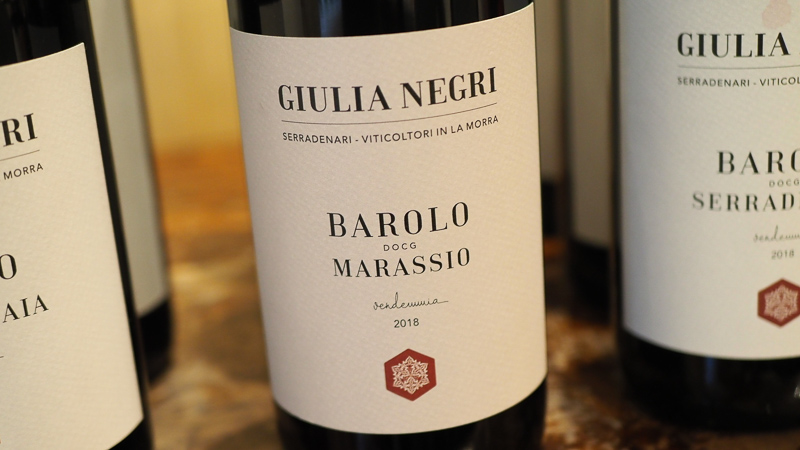
Giulia Negri Barolo Marassio 2018 Piemonte, Italy
Fine, fresh and aromatic nose with sappy, perfumed red cherry fruit. The palate has great concentration and freshness. Chalky and textured. Bright but showing good intensity and a fine acid line, integrating perfectly into the fruit. 97/100
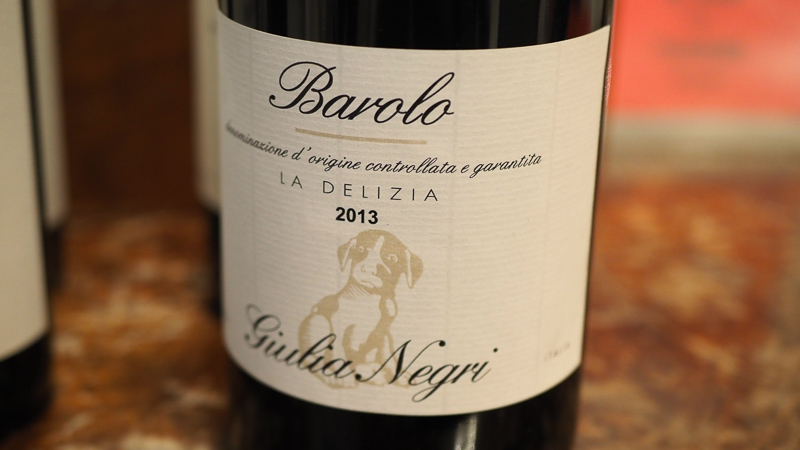
Giulia Negri Barolo La Delizia 2013 Piemonte, Italy (magnum)
This is quite different in style. It’s concentrated and dense with some mint and balsamic notes alongside firm, structured black fruits, with a long life ahead of it. A big wine. 93/100
UK agent: Corney & Barrow
Find these wines with wine-searcher.com

